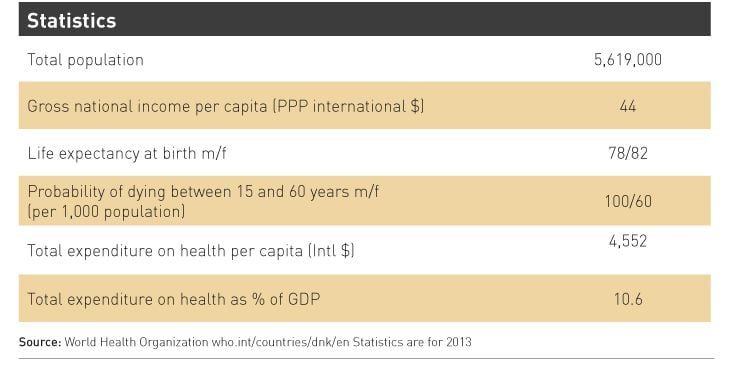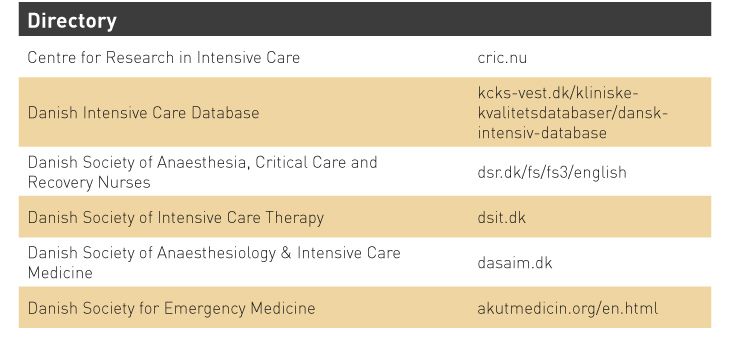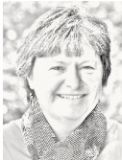ICU Management & Practice, Volume 16 - Issue 1, 2016
Interview with Professor Ingrid Egerod
Prof. Ingrid Egerod, RN, MSN, PhD is an active critical care researcher who has focused on the wellbeing and recovery of intensive care patients during admission and recovery. Her particular areas of interest are sedation, mechanical ventilator weaning, patient experiences, family care, ICU diaries, ICU follow-up consultations, ICU environment modifications, as well as symptoms and conditions such as pain, sleep, agitation, and delirium. She co-founded and chaired the Nordic Association for Intensive Care Nursing Research (NOFI).
What are the main challenges for critical care in Denmark?
We have the same as in many other countries. We have very good critical care but competing finances when it comes to expenses such as medications. We are fortunate to have high staffing levels, so that is not a major challenge in Denmark.
What areas of critical care practice in Denmark can other countries learn from?
Our profile in Denmark has been to take a very human
approach to patient care. One thing that has been characteristic for Danish
practice is that we use very little sedation (Egerod et al. 2013a)—in other
countries this has been regarded as somehow ‘cheating’, because instead of
sedating we have more staffing. But having good staffing levels means that the patient
doesn’t have all the complications that intubation might give later on.
I think also that we are willing to try some things because we are more autonomous in Denmark than in many other countries. The very human approach in Denmark and in the Nordic countries means we avoid physical restraints, we work a lot with the environment, we pay lots of attention to light and sound and we have dynamic lighting in most ICUs now. The human approach is a sort of ‘trademark’ in Denmark and Nordic countries. You are one of the authors of an international survey on the state of critical care nursing education in Europe (Endacott et al. 2015).
What is the system for critical care nursing education in Denmark?
There are positive and negative things to say about our critical care education. The positive is that it is a two-year education. The nurses have a lot of practical, hands-on experience in all areas of critical care and they end up writing a short paper. The drawback is that it’s not an academic degree—it’s a diploma add-on to the basic nursing education. The quality of the final paper would be better if it was part of an academic programme, but regarding the practical aspect it is a very good education, with so much exposure to all areas of critical care.
You have researched intensive care unit spousal care-giving (e.g. Ågård et al. 2015). How might this research inform practice? Is there sufficient support in Denmark for intensive care unit survivors?
We have done a lot of research on survivorship and spousal care-giving. I would say that we are not there yet—we still need to do more work. We are very aware of the importance of family for the patient who is critically ill and also that the patient’s critical illness has a great impact on the family and spouses in particular. So we have follow-up groups for families, but it’s not a complete systematic national programme yet. However, we are very aware that it is what we would like to provide.
What’s holding it back?
A combination of lack of evidence and finances. Everything in the healthcare system is easier to get financed if there is a lot of strong evidence that it is critical. In Denmark we have very high-quality life-saving critical care, but like most other countries we have less preventive care and aftercare. We are very aware that we need more aftercare, but the problem is that the international studies on aftercare of patients and family do not have enough evidence. The weakness is that these are human reactions and human reactions are not as easy to produce a lot of hard evidence on compared to sepsis or other conditions. We still need better instruments to record and understand human response. We are still working on it.
On intensive care follow-up you have made various recommendations in your 2013 study (Egerod 2013b). Can you comment on how this will be taken forward?
We have several ongoing PhD studies that are working on different ways to help the patient and the family during the ICU stay and in aftercare. Our big challenge is that we use the Short-Form Health Survey (SF-36) and other quality-of-life instruments that don’t capture all that we are actually looking for. Therefore we are still trying to get stronger evidence by finding other ways to research this, but all our qualitative research shows that the families are very grateful for the aftercare they get. So it’s getting more common that we do provide some kind of aftercare for both patients and their families.
What are the issues with qualitative research?
It’s always been a problem with the field of psychology that they have had to balance between the qualitative and quantitative paradigm. It is much more difficult to predict human reactions than it is to predict things that can be measured specifically. So we are trying to combine qualitative and quantitative research methodologies. In Europe we are conducting a lot of research on intensive care delirium, because delirium is something that can be identified, treated and prevented and it has an impact on how the patients do later on. Here it is necessary to combine the methodologies to get the full picture of how we can handle this situation. It is an inherent problem when we study human reactions. One of the problems in research is that in a lot of these grant committees physicians want to give grants to basic research and don’t regard patient reactions or psychological reactions as actual research, they regard it more as some kind of development work. It is more difficult to get funds for this type of research. On the other hand it doesn’t take much to help the actual human being in daily life. There is a very short way from research to practice where we can actually help people, but it doesn’t have the same status.
You have called delirium “the new black” (Egerod 2013). What did you mean by that?
What I meant was that all of sudden there is a lot of research of delirium. We have always had the knowledge from way back that when people had high fever, they get delirium or what we called earlier the ICU syndrome or other names. But it was not until around 2000 that Wes Ely and the team from Vanderbilt came out with the CAM-ICU to assess delirium (icudelirium.org). Once it had a name everybody recognised it here and it kind of became the 'new black' in research. More papers are coming out on delirium and it’s a very important topic, because it’s an issue we can do something about. We think that if we can have the patients sedated less and keep them awake then we are able to mobilise them, get them out of bed earlier and when people are out of bed earlier and they have their head up and feet down, they tend to have less much delirium, so we are starting to get to do something about it.


References:
Ågård AS, Egerod I, Tønnesen E, Lomborg K (2015) From spouse to caregiver and back: a grounded theory study of post-intensive care unit spousal caregiving. J Adv Nurs, 71(8): 1892-903.
Egerod I (2013) Intensive care delirium: the new black. Nurs Crit Care, 18(4): 164-5.
Egerod I, Albarran JW, Ring M, Blackwood B (2013a) Sedation practice in Nordic and non- Nordic ICUs: a European survey. Nurs Crit Care, 18(4): 166-75.
Egerod I, Risom SS, Thomsen T, Storli SL, Eskerud RS, Holme AN, Samuelson KA (2013b) ICU-recovery in Scandinavia: a comparative study of intensive care follow-up in Denmark, Norway and Sweden. Intensive Crit Care Nurs, 29(2): 103-11.
Endacott R, Jones C, Bloomer MJ, Boulanger C, Ben Nun M, Lliopoulou KK, Egerod I, Blot S (2015) The state of critical care nursing education in Europe: an international survey. Intensive Care Med, 41(12): 2237-40.
Jensen JF, Thomsen T, Overgaard D, Bestle MH, Christensen D, Egerod I (2015) Impact of follow-up consultations for ICU survivors on post-ICU syndrome: a systematic review and meta-analysis. Intensive Care Med, 41(5):763-75.
Svenningsen H, Tønnesen EK, Videbech P, Frydenberg M, Christensen D, Egerod I (2014) Intensive care delirium - effect on memories and health-related quality of life - a follow-up study. J Clin Nurs, 23(5-6): 634-44.




















